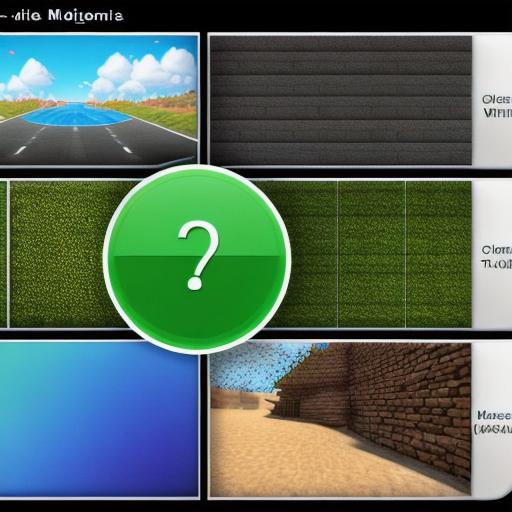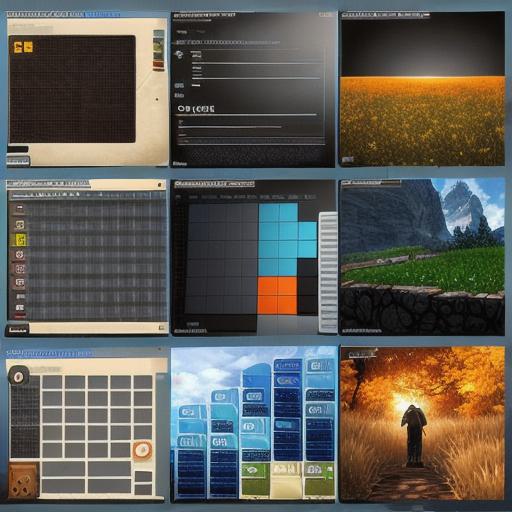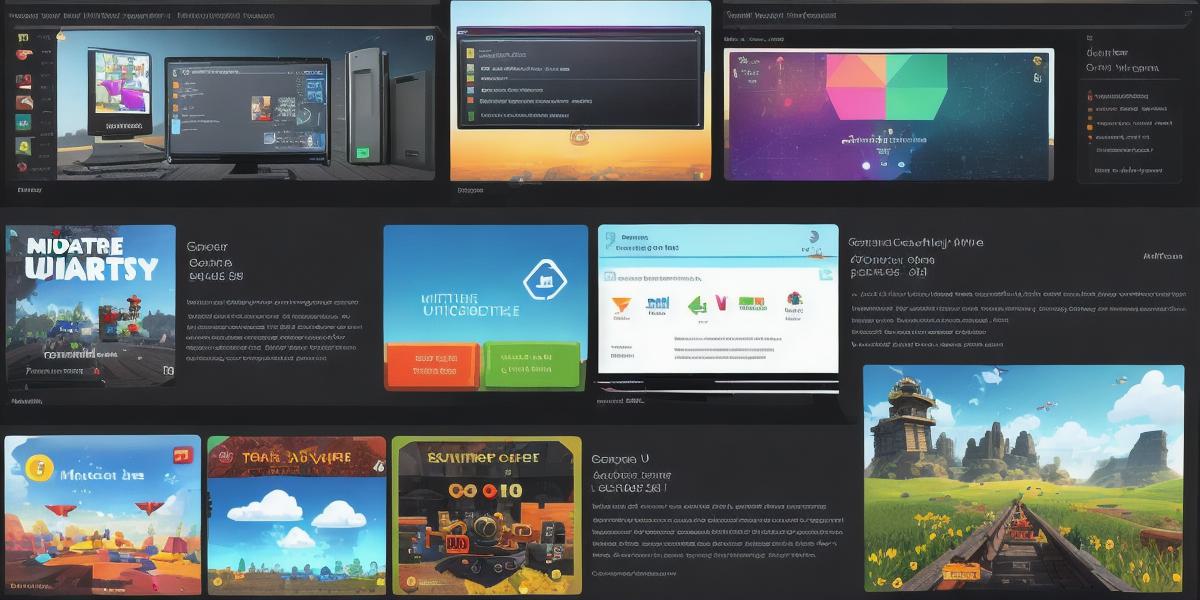Middleware tools are essential components in game development that provide developers with a range of features and capabilities to create games and applications quickly and efficiently. These tools offer advanced graphics rendering capabilities, real-time physics simulation, and other functionalities that can help streamline the game development process. In this comprehensive guide, we will explore some of the best middleware tools for game development, compare their key features and capabilities, and discuss factors to consider when choosing a middleware tool for your game development project.
Overview of Middleware Tools in Game Development
Middleware tools are software libraries that developers use to build games and applications. These tools provide a range of functionalities that can help simplify the game development process, such as graphics rendering, audio processing, physics simulation, and more. Middleware tools are designed to be modular and flexible, allowing developers to integrate them into their existing codebase or use them standalone.
Some popular middleware tools used in game development include:
- Unity Hub
- Unreal Engine
- CryEngine
- Stencyl
- Construct 3
Each of these tools offers unique features and capabilities that make them suitable for different types of game development projects. In the following sections, we will explore each of these tools in detail.

- Unity Hub
Unity Hub is a popular middleware tool used in game development that provides developers with a range of features and functionalities to create games and applications quickly and efficiently. Some key features of Unity Hub include:
Integration with Various Programming Languages
Unity Hub supports integration with various programming languages, including C, JavaScript, and Boo. This makes it easy for developers to use their preferred language when building games and applications.
Advanced Graphics Rendering Capabilities
Unity Hub offers advanced graphics rendering capabilities that allow developers to create games and applications with stunning visual effects. It supports a range of graphics APIs, including OpenGL, DirectX, and Metal, which allows developers to target multiple platforms with ease.
Built-in Physics Engine
Unity Hub comes with a built-in physics engine that allows developers to add realistic physics simulation to their games and applications. It supports a range of physics engines, including Havok and Unity Physics, which makes it easy for developers to choose the one that suits their needs.
Cross-Platform Support
Unity Hub offers cross-platform support, allowing developers to create games and applications that run seamlessly on multiple platforms, including Windows, Mac, iOS, Android, and more. This makes it easy for developers to reach a wider audience and target multiple markets.
- Unreal Engine
Unreal Engine is another popular middleware tool used in game development that provides developers with a range of features and functionalities to create games and applications quickly and efficiently. Some key features of Unreal Engine include:
Support for Real-Time Graphics Rendering
Unreal Engine is designed for real-time graphics rendering, making it ideal for creating games and applications that require stunning visual effects. It supports a range of graphics APIs, including DirectX and OpenGL, which allows developers to target multiple platforms with ease.
Advanced Physics Simulation Capabilities
Unreal Engine comes with advanced physics simulation capabilities that allow developers to add realistic physics simulation to their games and applications. It supports a range of physics engines, including Havok and PhysX, which makes it easy for developers to choose the one that suits their needs.
Integration with Various Programming Languages

Unreal Engine supports integration with various programming languages, including C++ and Blueprints, making it easy for developers to use their preferred language when building games and applications. It also offers a range of tools and features that make it easy for developers to create and manage complex game systems.
Cross-Platform Support
Unreal Engine offers cross-platform support, allowing developers to create games and applications that run seamlessly on multiple platforms, including Windows, Mac, iOS, Android, and more. This makes it easy for developers to reach a wider audience and target multiple markets.
- CryEngine
CryEngine is another popular middleware tool used in game development that provides developers with a range of features and functionalities to create games and applications quickly and efficiently. Some key features of CryEngine include:
Advanced Graphics Rendering Capabilities
CryEngine offers advanced graphics rendering capabilities that allow developers to create games and applications with stunning visual effects. It supports a range of graphics APIs, including DirectX and OpenGL, which allows developers to target multiple platforms with ease.
Real-Time Physics Simulation
CryEngine comes with real-time physics simulation capabilities that allow developers to add realistic physics simulation to their games and applications. It supports a range of physics engines, including Havok and PhysX, which makes it easy for developers to choose the one that suits their needs.
Integration with Various Programming Languages
CryEngine supports integration with various programming languages, including C++ and Python, making it easy for developers to use their preferred language when building games and applications. It also offers a range of tools and features that make it easy for developers to create and manage complex game systems.
Cross-Platform Support
CryEngine offers cross-platform support, allowing developers to create games and applications that run seamlessly on multiple platforms, including Windows, Mac, iOS, Android, and more. This makes it easy for developers to reach a wider audience and target multiple markets.
- Stencyl
Stencyl is a popular middleware tool used in game development that provides developers with a range of features and functionalities to create games and applications quickly and efficiently. Some key features of Stencyl include:
Integration with Various Programming Languages
Stencyl supports integration with various programming languages, including JavaScript and HTML5, making it easy for developers to use their preferred language when building games and applications. It also offers a range of tools and features that make it easy for developers to create and manage complex game systems.
Cross-Platform Support
Stencyl offers cross-platform support, allowing developers to create games and applications that run seamlessly on multiple platforms, including Windows, Mac, iOS, Android, and more. This makes it easy for developers to reach a wider audience and target multiple markets.
Advanced Graphics Rendering Capabilities
Stencyl offers advanced graphics rendering capabilities that allow developers to create games and applications with stunning visual effects. It supports a range of graphics APIs, including WebGL and HTML5 Canvas, which allows developers to target multiple platforms with ease.
- Construct 3
Construct 3 is another popular middleware tool used in game development that provides developers with a range of features and functionalities to create games and applications quickly and efficiently. Some key features of Construct 3 include:
Integration with Various Programming Languages
Construct 3 supports integration with various programming languages, including JavaScript and HTML5, making it easy for developers to use their preferred language when building games and applications. It also offers a range of tools and features that make it easy for developers to create and manage complex game systems.
Cross-Platform Support
Construct 3 offers cross-platform support, allowing developers to create games and applications that run seamlessly on multiple platforms, including Windows, Mac, iOS, Android, and more. This makes it easy for developers to reach a wider audience and target multiple markets.
Advanced Graphics Rendering Capabilities
Construct 3 offers advanced graphics rendering capabilities that allow developers to create games and applications with stunning visual effects. It supports a range of graphics APIs, including WebGL and HTML5 Canvas, which allows developers to target multiple platforms with ease.
Comparison of Middleware Tools in Game Development
Each of the middleware tools we have discussed offers unique features and capabilities that make them suitable for different types of game development projects. Here is a comparison of these tools based on their key features:
| Tool | Key Features |
| — | — |
| Unity Hub | Integration with various programming languages, advanced graphics rendering capabilities, built-in physics engine, cross-platform support |
| Unreal Engine | Support for real-time graphics rendering, advanced physics simulation capabilities, integration with various programming languages, cross-platform support |
| CryEngine | Advanced graphics rendering capabilities, real-time physics simulation, integration with various programming languages, cross-platform support |
| Stencyl | Integration with various programming languages, cross-platform support, advanced graphics rendering capabilities |
| Construct 3 | Integration with various programming languages, cross-platform support, advanced graphics rendering capabilities |
Factors to Consider When Choosing a Middleware Tool for Game Development
When choosing a middleware tool for game development, there are several factors to consider. These include:
- Platform Support – Does the tool support the platforms you need to target? For example, if you are developing a mobile game, you will need a tool that supports iOS and Android.
- Graphics Rendering Capabilities – Does the tool offer advanced graphics rendering capabilities that can help create stunning visual effects?
- Physics Simulation Capabilities – Does the tool offer realistic physics simulation capabilities that can help add realism to your games and applications?
- Integration with Various Programming Languages – Does the tool support integration with your preferred programming language?
5.Cross-Platform Support
– Does the tool offer cross-platform support, allowing you to create games and applications that run seamlessly on multiple platforms?
- Learning Curve – Is the tool easy to learn and use, or does it have a steep learning curve?
- Cost – Does the tool come with a cost, and is it within your budget?
Conclusion
In conclusion, middleware tools are essential for game development, providing developers with a range of features and functionalities that can help create stunning visual effects, add realism to games, and streamline development processes. When choosing a middleware tool for game development, it is important to consider platform support, graphics rendering capabilities, physics simulation capabilities, integration with various programming languages, cross-platform support, learning curve, and cost.



